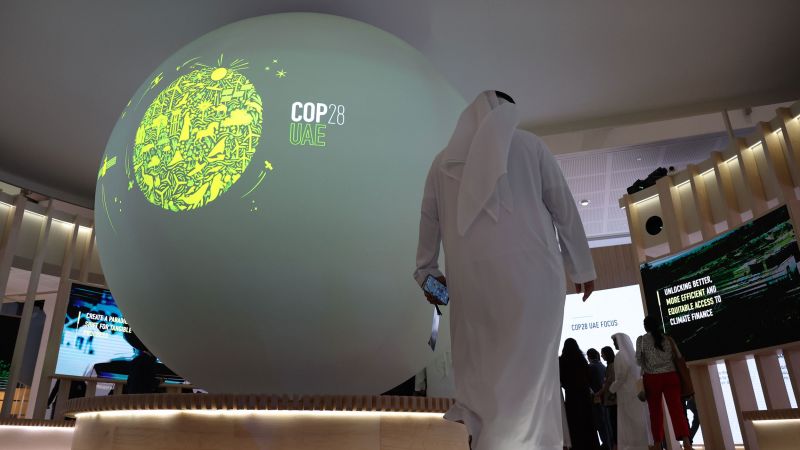
Floods kill in the Horn of Africa. Wildfires destroyed Canadian woods this summer. Global temperature records are unprecedented in human history. According to environmental campaigners, there is no question that urgent collective action is required to preserve a livable earth. Here are four things to keep an eye out for as the COP28 UN climate negotiations begin in Dubai on Thursday.
The energy transition
All eyes are on the words leaders will use to transition from fossil fuels to renewable energy, which is critical to keeping long-term warming to 1.5 degrees Celsius, as stipulated in the Paris Agreement. Countries committed in 2021 at COP26 in Glasgow to a “phasedown” of “unabated coal power.” Since then, governments and campaigners have been gathering momentum to extend similar concepts to oil and gas, though the exact language will need to be worked out. Expectations are high for voluntary promises to triple renewable energy capacity by 2030, a goal approved in a recent climate declaration by the United States and China, as well as to double the yearly rate of energy efficiency gains. Ideally, the commitments should come in the form of an official response to the “Global Stocktake,” a damning report card published in September that highlighted how little the world has done to confront the crisis.
Making ‘loss and damage’ a reality
A significant milestone during the COP27 meeting in Sharm El-Sheikh, Egypt, was an agreement in principle to pay climate-vulnerable countries that are least responsible for greenhouse gas emissions but are facing multiplying extreme weather impacts. However, establishing a new fund has proven difficult, with negotiations taking more than a year. Among the questions that needed to be answered: will all countries pay, or only the wealthy? Who will be the beneficiaries? What would be the location of the fund? In early November, a shaky agreement was reached, and COP28 president Sultan Ahmed Al Jaber told AFP in a recent interview that he believed a decision would be made early in the meeting.
The climate financing gap
Experts believe that the world will need more than $3 trillion in annual climate-related flows by 2030 to keep climate goals alive – but developing countries have fallen far short, both in terms of accelerating decarbonization, known as mitigation, and building resilience to climate impacts, known as adaptation. Richer countries pledged in 2009 to fund these goals with $100 billion per year by 2020, a goal that was eventually met last year, according to an OECD assessment released earlier this month. COP28 is likely to create the framework for a new financial aim to replace the existing $100 billion ambition, while no decision is necessary this year. It could also provide an opportunity to better define and operationalize clause 2.1(c) of the Paris Agreement, which called for “making finance flows consistent with a pathway towards low greenhouse gas (GHG) emissions and climate-resilient development.”
Methane and food systems
Despite being the second largest contributor to climate change after carbon dioxide, atmospheric methane has received very little attention. At the negotiations, China, the United States, and the United Arab Emirates will conduct a methane and non-CO2 greenhouse gas summit, where a 2021 “Global Methane Pledge” to reduce emissions by 30 per cent by 2030 might be strengthened. COP28 will also be the first international meeting to place a strong emphasis on food systems, which account for one-third of all man-made greenhouse gas emissions, with extreme weather and droughts impacting food production and transportation. A meeting of hundreds of “subnational” officials, such as mayors and governors, is another first. Around 70 per cent of the world’s people are expected to call cities home by the year 2050, and increasing their participation in the climate fight is seen as vital, especially when national governments stall progress.






